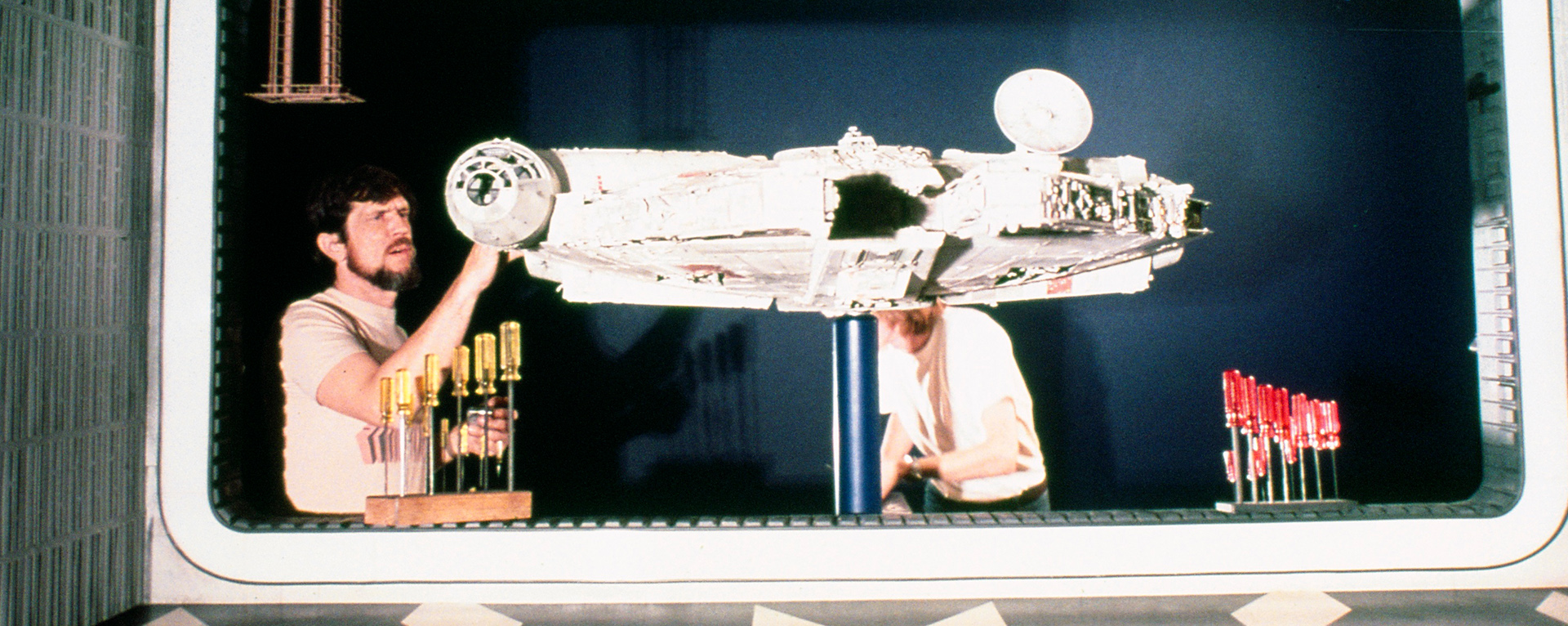Light & Magic: Four Stories from Episode One
ILM’s Legacy of Innovation Revealed by Those Who Made It
The documentary series Light & Magic arrived on Disney+ this past week. Directed by longtime Lucasfilm collaborator Lawrence Kasdan, the series turns back the clock on nearly 50 years of visual effects innovation at Industrial Light & Magic (ILM). Each episode packs many discoveries about the visual effects of iconic movies from Lucasfilm and beyond. Episode One, “Gang of outsiders,” introduces viewers to ILM at its founding, and most importantly, to the people tasked with forming this intrepid crew.
1. ILM was established because there was no other option
“The history of ILM goes way back,” director George Lucas says in a piece of archival footage from 1979. “When we started [work on Star Wars: A New Hope], we investigated all of the optical houses and special effects people and realized there was nobody around and no company around that could really do things that I wanted to do in that picture. So, I realized that I was going to have to start a company and put together a whole group that would just be specifically for making Star Wars.” The name for this sub-division of Lucasfilm would be coined by Lucas himself. They’d set up its original facility in the southern California town of Van Nuys
2. Everyone is inspired by something
Star Wars has inspired countless artists since 1977, but the artists behind Star Wars had to find inspiration of their own. “When I was about five years old, King Kong came on television,” explains stop-motion animator and designer Phil Tippett, “and that just kind of changed my life.” In addition to the 1933 classic King Kong, the first ILM generation encountered new adventures on the big screen like 1958’s The 7th Voyage of Sinbad or 1968’s 2001: A Space Odyssey. Sinbad was among the works by stop-motion animation pioneer Ray Harryhausen who became a direct influence on ILM artists like Tippett and visual effects supervisors Dennis Muren and Ken Ralston.
3. Authenticity comes from grounding visual effects in reality
As he departed for principal photography in Africa and the United Kingdom, George Lucas provided the ILM crew with reference footage from World War II-era movies featuring gun-mounted cameras and views from inside moving aircraft. Using the material as a sort of proto-animatic, Lucas had cut the footage into a sequence to be used as inspiration for ILM’s work on the dogfights in space between Rebel X-wings and Imperial TIE fighters. A pilot himself, visual effects supervisor John Dykstra then envisioned the shooting of the visual effects as if they were actually mounting cameras on spacecraft in order to cover the action. “I wanted to make this stuff indistinguishable from reality,” Dykstra explains. The solution was an innovative motion-control camera system that Dykstra and crew would build themselves.
4. The final Millennium Falcon was a last-minute design
The roguish smuggler Han Solo required an unforgettable “pirate ship,” as his spacecraft was often referred to. Settling on a design, the ILM crew was surprised to find a similar-looking craft on the new television program, Space 1999. “George didn’t want to copy anybody,” concept artist Joe Johnston recalls. Going home to envision a new design, he encountered a “mental block.” After a while, he’d find inspiration from observing a pair of plates turned on top of each other, like a flying saucer, but with additional components affixed to provide a sense of direction in flight. The final touch was the placement of the round cockpit off-center. John Dykstra would joke that the ship’s nickname was “the porkburger” because of its distinct appearance.
Watch the Light & Magic Trailer Below:
Lucas O. Seastrom is a writer and historian at Lucasfilm.

